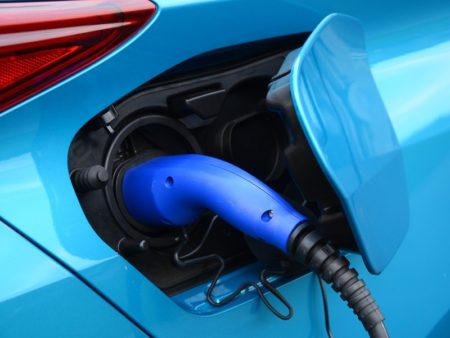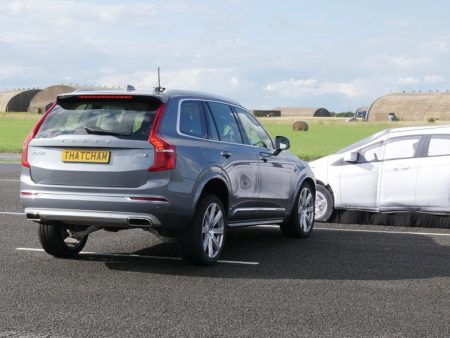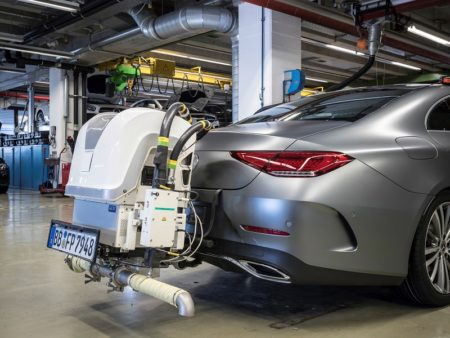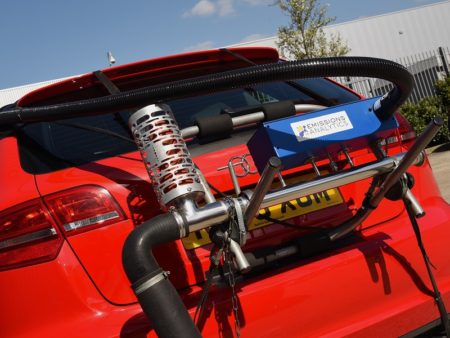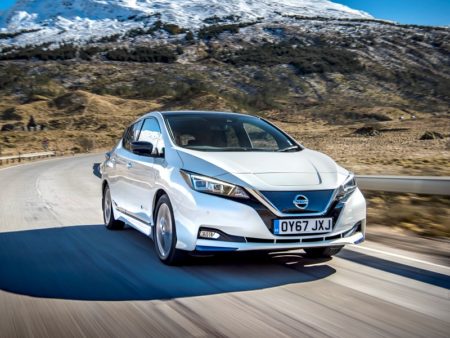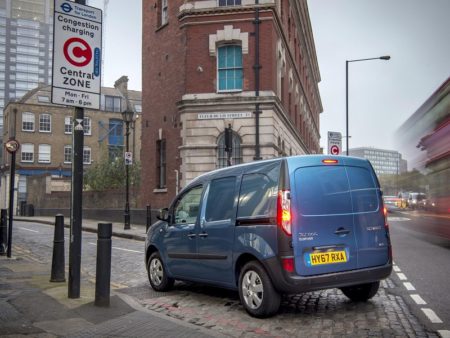Minutes to Midnight: Saving the Company Car
Under unprecedented pressure, the UK’s vital company car sector needs urgent action from Government to avoid irreparable damage. And the clock is ticking, explains Alex Grant.
THE CASE FOR COMPANY CARS:
They are cleaner…
Company car tax has incentivised low-CO2 vehicles since 2002, and has proved very effective at getting drivers to adopt the greenest new models. HMRC estimated a 15g/km cut in average CO2 emissions for company cars within two years of its introduction, and it has delivered progressively lower-carbon fleets since.
Average CO2 emissions among newly-registered BVRLA members’ cars was 112.0g/km in Q1 2018, versus a market-wide average of 122.5g/km. These are also far more likely to be a hybrid or electric vehicle (9.6% in Q1, versus 5.1% for the UK market), while 87% of car fleets are compliant with the newest Euro 6 emissions standard. With personal lease cars emitting 12% more CO2, rising to 22% grey fleet cars, the consequences of this sector declining are huge.
ALD Automotive fleet consultant, Mark Evans, says company car incentives have been successful on two fronts: “The system has encouraged manufacturers to lower emissions across their ranges, and this has encouraged drivers to choose the most efficient and cleanest vehicles.”
They are safer…
With short replacement cycles, fleets operate some of the newest cars on the road and are among the earliest adopters of cutting-edge safety technology, which is already reducing the severity of accidents or avoiding them altogether.
Fleets also possess significant buying power, and trends in this market can influence how manufacturers equip the latest models, according to Thatcham Research. Director of insurance research, Matthew Avery, explains: “Half of all new car sales in the UK are fleet vehicles, and they also tend to be the vehicles doing the biggest mileage, so their exposure is higher. Those are the vehicles that need it most.”
Company cars enable businesses not only to protect their own employees, but other road users as well. And, with Government figures estimating road traffic collisions cost the UK economy in excess of £16.3bn per year, this contribution is vital.
They are good for business…
HMRC statistics reflect an estimated 940,000 drivers paid Benefit-in-Kind on a car in 2016/17, and many are low-rate taxpayers for whom the car is a job need. Company cars offer a lower administrative burden than letting drivers use their own vehicles for work, and offer predictable running costs for years ahead.
Rachel Lane, fleet consultant at Zenith, which provides vehicles from days to years, says: “It is clear that there is a business-critical role for a lot of company vehicle fleets that cannot be serviced through alternative transport arrangements. Our customers are looking to the ongoing government agenda of making Britain a place to do business.”
Lex Autolease says the value goes even further: “When automotive technology is moving at its fastest pace in decades, the added assurance of expert advice from a leasing provider to help minimise risk and ensure the right vehicle is selected for the right job, is also a significant benefit,” says Ashley Barnett, the company’s head of consultancy.
THE CHALLENGES FACING COMPANY CARS
1. Limited clarity over the transition to WLTP
The Worldwide harmonised Light Vehicles Test Procedure (WLTP) came into force last September, designed to produce more realistic fuel economy and CO2 emissions data than the New European Drive Cycle (NEDC) it replaces. Manufacturers have until September to re-test their entire model ranges, expected to bring 20% increases in CO2, car for car, with obvious tax implications for fleets.
Operators are in the dark about how this will be handled. Last year’s Budget confirmed adjustments to company car tax and vehicle excise duty in April 2020, for the higher CO2 figures. But there’s no indication of how those tax bands will shape up, or if they might be backdated to all WLTP-tested cars.
“Uncertainty over the BiK restructure is delaying decisions, with implications for procurement, HR, operational and end-user interests,” explains Sarah Gray, a fleet consultant at ALD Automotive. “Fleet managers are nervous that cars that are attractive on Benefit-in-Kind now could change in the future, making them far less attractive.”
Arval, meanwhile, says fleets are finding temporary solutions while they await information: “We are seeing an increasing trend on the part of fleets, especially larger corporates that are generally better informed about WLTP, to sidestep the situation by extending lease contracts on a month-by-month basis,” says the company’s head of consultancy, Shaun Sadlier.
This is only part of the problem. NEDC data is still being produced, to measure ongoing improvements in fuel economy, but these ‘NEDC Correlated’ figures are conversions from WLTP data. They are often higher than ‘proper’ NEDC figures, and HMRC hasn’t adjusted tax bands to cope. The result is significant tax rises for cars which haven’t changed mechanically, and the potential to disincentivise the newest, WLTP-tested cars, versus older models which haven’t been.
Ashley Barnett, of Lex Autolease, says this is already causing chaos: “Vehicles are falling out of policies with CO2 caps and bearing additional financial consequences. Increased Benefit-in-Kind for drivers and higher employer National Insurance and corporation tax costs for employers, as a result of lease rental restrictions and reduced capital allowances, are a cause for concern.”
It’s also leaving some fleets facing CO2 changes between ordering and delivery, according to ALD Automotive’s Mark Evans: “More and more drivers are keeping cars for longer or moving to second hand private cars, which means that in many cases older, less efficient vehicles will stay on fleet. This will, in turn, impact air quality at a time when that is a stated priority.
2. Unfair penalties against diesel engines
With little warning, the 2017 Budget announced company car tax rises for what amounts to all diesel cars, effective from April this year. It meant the 3% Benefit-in-Kind surcharge for diesels, originally due to be dropped in April 2016, was instead increased to 4% for cars that don’t meet the RDE2 standard – a measure of how on-road emissions compare to laboratory tests effective from January 2021. Against a backdrop of negative press coverage, the message from Government appears to be clear; diesel is bad.
But diesel remains an essential tool for high-mileage fleets, despite improvements to hybrid, electric and petrol alternatives. According to the BVRLA’s latest Quarterly Leasing Survey, 54.9% of new registrations on its members’ fleets were diesel-powered. Blanket tax rises often penalise job-need drivers, who may cover such high mileage that there is no alternative yet.
There are knock-on effects. For the last three quarters, the BVRLA member fleet’s average CO2 emissions have stagnated, at around 112g/km – the association said this was a result of rising demand for higher-CO2 privately leased and petrol cars. Likewise, HMRC data shows 940,000 company car drivers in 2016/17, down 20,000 year-on-year. Those who continue to do are potentially also being incentivised to pick less efficient, less suitable vehicles to keep a lid on their tax bill.
ACFO slammed the changes as “grossly unfair”, with chairman, John Pryor, criticising the Government for targeting new fleet cars and not addressing older vehicles. “Employees, particularly ‘perk’ drivers, may think that it is not worth having a company car and may opt for a cash allowance,” he explains. “By ‘doing their own thing’ it may well be that those employees choose an older, more polluting vehicle than the company car they may otherwise have been entitled to, which then damages the Government’s bid to improve air quality while also doing nothing to help companies with their carbon footprint reduction.”
It’s simply not that straightforward. The latest on-road test results from Emissions Analytics show diesels not only emit 18% less CO2, but 71% fewer particulates too. According to CEO, Nick Molden, 42 diesel models already meet the RDE2 standard based on their testing, but are still subjected to the tax hikes. The cleanest emit 60% less NOx than the RDE2 limit.
It’s made for a buyer’s lottery, he says: “If a fleet chooses between two equivalently-sized vehicles, one petrol and one diesel, the real-world emissions of the diesel are crucial to the answer. The worst case of choosing the petrol is higher CO2, worse fuel economy and higher particulates – while NOx may be similar. The excess could be partially offset by going for a downsized petrol engine or smaller car, but this would lead to a reduction in operational utility.
“Choosing a Euro 6 is not sufficient as it includes many of the dirty vehicles. Restricting the choice to RDE Step 2 cars gives zero choice. Therefore, a pragmatic middle-way is required, which is what the EQUA Index can provide. This allows fleets to keep the CO2 benefit and driver utility of diesel.”
Duncan Chumley, managing director of Free2Move Lease, believes policies should be tech-neutral: “It is important to note that increased uptake of hybrid vehicles, plug-in hybrid vehicles, electric vehicles and fuel cell vehicles is critical to achieve the objectives on reducing CO2 and improving air quality. However, the internal combustion engine – both petrol and diesel – will continue to be the most widely available technology in the short to medium term.”
3. Lack of ULEV strategy
The long-term roadmap for electrification is clear; selling ‘conventional’ petrol and diesel vehicles will be banned in 2040. But the short-term picture is less obvious and, although Ultra-Low Emission Vehicles (ULEVs) are increasingly viable mainstream fleet options, encouraging uptake still requires financial support.
Company car tax is fundamental to this. Despite quickly-implemented changes to diesel tax during last year’s Budget, Benefit-in-Kind bands won’t offer significant advantages for ULEVs until April 2020. These have eroded since the 0% and 5% bands, for EVs and PHEVs, were removed in April 2015 – a full EV will be in the 16% band by 2019/20, before falling to 2% the year after. Given the speed at which this technology is developing, those incentives are less useful in 2020 than they are today.
“The high acquisition cost of ULEVs already makes them prohibitive for some from a volume fleet perspective, and it goes against logic that they can be less tax-efficient than traditionally-fuelled vehicles with higher emissions. If no action is taken, we are unlikely to see fleets adopting policies weighted towards ULEVs in the immediate future,” explains Ashley Barnett, of Lex Autolease.
Environmental law firm, ClientEarth, sees this as a barrier to improving air quality. Senior campaigner, Andrea Lee, comments: “What is clear is that the current fiscal system has contributed to the problem that we are in now, and is not doing enough to get us out of it quickly. The Treasury needs to stop slowing down and blocking action on air pollution and help develop fiscal policies that will not only help protect people’s health, but also drive innovation and investment.”
To add to the difficulties, although HMRC has issued Advisory Fuel rates for electric vehicles, there are none for PHEVs yet. ACFO has long lobbied for these to be published, arguing that it causes an off-putting administrative burden, discouraging uptake and proper use of the technology. Sarah Gray at ALD Automotive is concerned this could slow uptake, and infrastructure roll-out too.
Barnett agrees: “Many fleet operators resort to existing AFR rates. From the perspective of a driver with a plug-in hybrid vehicle using the same AFR as drivers of traditionally fuelled vehicles, where is the incentive to charge-up instead of fuelling-up? They receive the same reimbursement either way.”
This doesn’t get easier – as of April 2021, there’s no indication whatsoever of how Benefit-in-Kind bands will shape up. ACFO’s John Pryor says this all puts unnecessary barriers in place. “Fleets want to operate the cleanest, most efficient cars that are fit-for-purpose, including promoting the use of plug-in vehicles to employees, but government policy is hampering that transition on many levels. A wholesale review of existing strategy is required.”
4. Inconsistent air quality plans
Air pollution is a problem in the UK, and action clearly needs to be taken. However, moves to charge vehicles to enter city centres, or exclude them altogether, are looking likely to be handled at a local level, with potential for different standards and timeframes. London has brought its plans forwards and, aside from the 28 authorities required to take action plus others doing so independently, a coalition of mayors are demanding stricter-than-EU World Health Organisation pollution limits post-Brexit. Businesses are justifiably feeling confused about forward-planning.
ClientEarth’s Andrea Lee says fleets need consistency to help them move to cleaner vehicles: “The UK government’s response to their consultation on mitigation measures was published in March. Unfortunately, it contained little more than a list of suggested potential measures, with no commitment or detail of how they could be implemented. Crucially, the Government missed its chance to propose a fair scrappage scheme, with the buck passed once again to local authorities.”
More information will be vital, with Leo Taylor, head of product management at Alphabet, saying fleets aren’t always aware of vehicles’ compliance with emissions standards, and adding that they should move to ULEVs to futureproof themselves. “Precise plans for these CAZs and the specific restrictions on vehicles are still to be confirmed by each local authority, but that doesn’t mean [fleets] can’t be prepared. For the latest plans on CAZs, keep in touch with local news as well as visiting the DEFRA website.”
And Duncan Chumley, of Free2Move Lease UK, says the Government mustn’t forget the importance of fleets in these plans: “Company cars offer clear benefits in driving forward air quality improvements because the newest cars meet the latest emissions limits, so new cars that replace older vehicles provide an immediate improvement in air quality.”
THE ACTION PLAN: SIX STEPS TO SAVE THE COMPANY CAR
- Advance notice of Benefit-in-Kind bands: Fleets need these at least four years in advance to avoid unexpected tax burdens later on. Bands through to 2022/23 are required during the 2018 Autumn Budget, including adjustments for higher WLTP CO2 figures.
- Tax adjustments for NEDC Correlated figures: Tax bands which account for the inconsistency of NEDC Correlated figures compared to ‘true’ NEDC data are needed during the 2018 Autumn Budget, and should be implemented in April 2019.
- Don’t over-tax diesel engines: Blanket tax rises for diesel engines are affecting businesses who still rely on this fuel, without considering whether the alternatives are always cleaner. We urge Government to withdraw the one percentage point rise in Benefit-in-Kind for diesel cars introduced earlier this year, at least until RDE2 testing is commonplace.
- Bring forward ULEV tax incentives: It makes no sense to delay low tax bands for ULEVs until April 2020, potentially pricing fleets out of technology that can save money and support the Government’s air quality ambitions. The 2018 Autumn Budget is an opportunity to bring these forward a year and consider incorporating the Plug-in Car Grant within a vehicle’s P11d value.
- Advisory Fuel Rates for ULEVs are needed now: Electricity is becoming a far more common fuel for fleets. It is vital that AFRs for plug-in vehicles are published as soon as possible, to help businesses deploy this technology more easily, and ensure it is used correctly.
- Set out a national air quality framework: Setting out a consistent national framework for clean air zones, developed in consultation with authorities, fleets, and the automotive industry, will help stakeholders understand longer-term aims and plan ahead.
HOW YOU CAN HELP
You can show your support for our campaign by taking two minutes to sign and share our petition here: https://petition.parliament.uk/petitions/227018
We’re also interested to hear – on, or off, the record – how Fleet World readers are coping with a more difficult company car landscape.
How are you future-proofing your fleet? Have you moved away from offering company cars? And how has this affected the way you operate?
To get in touch, contact: [email protected]





